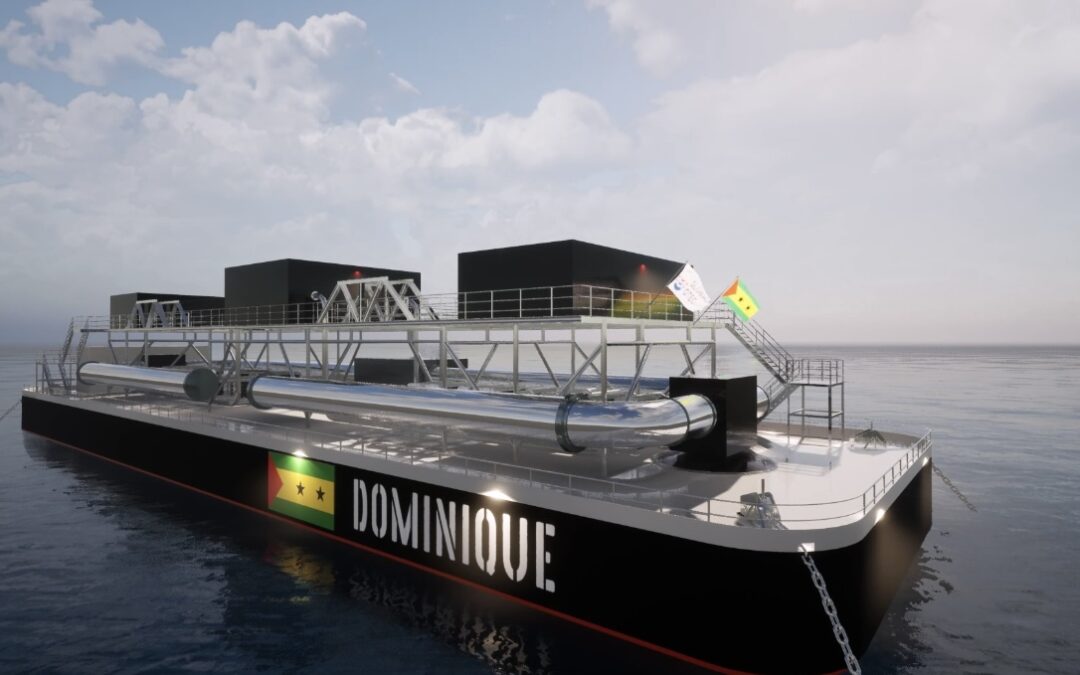UK-based firm Global OTEC Resources in April received its first certificate of approval for the methodology of installation of a cold-water riser—a pipe used to transport seawater from the ocean to the seawater tank and vice versa from an offshore OTEC platform (see sidebar below). The certificate was granted by marine warranty surveyor ABL Group, which provides independent third-party technical reviews for high-risk marine construction and transportation projects. The milestone “is particularly important given the technical challenges faced by OTEC installations, and the long history of OTEC’s unsuccessful implementations,” noted Global OTEC.
“History is an important teacher, and we are committed to learning from it,” said Global OTEC Founder and CEO Dan Grech. “Failure of previous OTEC projects highlights where we should exercise caution, so third-party technical due diligence from the earliest stage is important for our success,” he said.
Poised to Become the First Commercial-Scale OTEC System
Global OTEC’s flagship project is the “Dominque,” a floating 1.5-MW OTEC platform set to be installed in São Tomé and Príncipe in 2025 (Figure 1). The company says the platform “will be the first commercial-scale OTEC system.”
That’s significant because OTEC is a technology that was proposed as far back as 1881 by French physicist Jacques Arsene d’Arsonval for converting solar radiation absorbed into the ocean to electrical power. OTEC has been proven to provide continuous power as well as fresh drinking water and cold water for refrigeration. But while more than a dozen prototypes have been tested intermittently since the first experimental 22-kW low-pressure turbine was deployed in 1930, no commercial-scale plants exist.
OTEC essentially seeks to exploit the ocean’s thermal gradients—temperature differences of 36F or more between warm surface water and cold deep seawater—to drive a power-producing cycle. “Since the ocean comprises around 70% of the earth’s surface it is a vast receiver and repository of solar energy. While waves, winds, tides, and currents are all forms of ocean renewable energy, which vary with time and season, conversely, an OTEC system permits the generation of constant power 24 hours a day, 365 days a year,” explained the International Energy Agency’s (IEA’s) Ocean Energy Systems (OES) technology collaboration program in an October 2021 white paper.
The Swell of Interest and Activity in OTEC
Existing prototypes have typically conformed to three basic configurations depending on their location: on land, relatively a short distance from the coast; mounted on the edge of a continental shelf; or on a floating platform or ship, where deep cold water can be accessed directly underneath the hull.
In addition, OTEC typically leverages three main types of power generation systems: a closed cycle, an open cycle, or a hybrid of the closed and open cycles. In a closed OTEC cycle system, ammonia—as a liquid with a low boiling point—is pumped into an evaporator (heat exchanger) that is heated by warm seawater, causing the working fluid to expand in a generator-driving turbine. The expanded vapor is then condensed back to a liquid using cold seawater in another heat exchanger. In an open cycle, the seawater itself functions as the thermodynamic fluid after it is “flashed” into steam in a partially evacuated chamber. The steam is then used to drive a steam turbine, and exhausted vapor is condensed using cold seawater.
According to the IEA’s OES, one of the world’s most significant tests was the U.S. Department of Energy’s floating OTEC-1 project, a 1-MW closed cycle test loop that ran between 1980 and 1981. The project proved the feasibility of horizontal launching, towing, and successfully mating to the underside of a converted U.S. Navy tanker a bundle of three high-density polyethylene (HDPE) cold water pipes (CWPs), plus later disconnection, using a special motion decoupling gimbal. It “provides confidence that if, in particular, the skills of the oil industry are utilized, it is possible to design and install successfully larger CWPs,” which have posed a “key uncertainty for OTEC,” OES said.
—Sonal Patel is a POWER senior associate editor (@sonalcpatel, @POWERmagazine).
Patel, Sonal. “OTEC, a Long-Stalled Baseload Ocean Power Technology, Is Seeing a Swell.” POWER Magazine, 1 June 2023, www.powermag.com/otec-a-long-stalled-baseload-ocean-power-technology-is-seeing-a-swell/. Accessed 2 June 2023.

